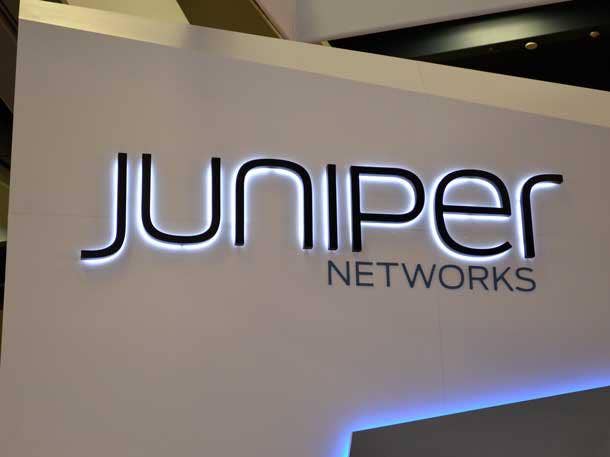‘Home Is Where The WAN Is’: Juniper Intros WAN Assurance Service
The new WAN Assurance Service and Mist Systems‘ Marvis-powered VNA conversational interface are tying together Juniper’s “Self-Driving Network” strategy, especially as enterprises shift off the campus and into the home office.

Juniper Networks, with the help of Mist Systems, is tying together LAN, WLAN and now WAN management across any IT location, including the campus and the home office, which have become a series of mini branch offices, according to the networking giant.
“From the minute [a users] jumps on their Wi-Fi at home to the internet, then to the applications, they‘re going across the WLAN and LAN, we now have that end-to-end visibility with automation and AI to bring that all home,” said Jeff Aaron, vice president of enterprise marketing for Juniper Networks.
Juniper on Wednesday introduced its new WAN Assurance Service and a virtual network assistant (VNA) conversational interface powered by Marvis, Mist‘s VNA technology. The enhancements make up the fourth generation of Juniper’s AI-Driven Enterprise strategy, which revolves around automating and optimizing IT management and end user satisfaction, according to the Sunnyvale, Calif.-based vendor.
[Related: New Juniper Partner Program Emphasizes Enterprise Push: Exclusive]
The cloud-based Juniper Mist WAN Assurance service brings in telemetry data from Juniper SRX devices to the Mist AI engine so businesses and MSPs can customize WAN service levels. The service works with Marvis to correlate events across the LAN, WLAN and now, the WAN, so issues can be quickly identified and remedied across all domains, Juniper said.
When troubleshooting performance issues, IT teams need to be able to troubleshoot all of the network, including the WAN, said Sean Stenovitch, vice president of sales operations and partner management for Kudelski Security Inc., a global MSP and Juniper partner.
The WAN Assurance service will open new doors for channel partners, Stenovitch said. “Networking in general has become commoditized and we have needed a next generation-network that addresses the business outcomes our customers need today,” he said.
Juniper‘s integration of Mist AI across its portfolio is a boon to solution providers and MSPs, Stenovitch added. “[Juniper] is making rapid progress in making the network simpler and smarter. This has created more opportunities for us to provide our customers with a differentiated solution,” he said.
Juniper‘s focus has evolved from traditional, secure routing, to SD-WAN, to now an AI-driven WAN, which will make troubleshooting for remote working use cases much easier, Juniper’s Aaron said. That’s because instead of being on one campus network, many users are coming in on different internet service providers. Consistency, he added, is the way to solve performance issues.
“It‘s important to bring the WAN, LAN, and WLAN under one engine, especially as companies are going from 1-10 branch offices to thousands of branches -- every home user in now a branch office and home is where the WAN is right now, and you need the ability to troubleshoot that,” he said.
The Marvis conversational interface is an enhancement to the Juniper Mist VNA that lets IT teams and partners retrieve real-time answers to natural language questions such as; “What was wrong with my Microsoft Teams call yesterday?” the company said. The latest enhancement can determine meaning behind the questions and offer up suggested next steps for troubleshooting or take actions on behalf of the user. The AI-powered interface can take feedback from users on whether the question was answered correctly. Since the interface was created using open APIs, the offering can communicate with existing chat bots as needed, according to Juniper.
The conversational interface takes the platform from an intelligent dashboard, to a tool that users can interact with, Aaron said. Juniper partners have the option of using the platform on behalf of their clients or giving their client access to the conversational interface.
Aaron said that Juniper would like the conversational interface to be able to answer 85 percent of helpdesk tickets without human intervention. Right now, the engine can address more than 75 percent of queries, he said.
An AI-Driven Enterprise is “hugely” beneficial for channel partners, too, especially MSPs, because it alleviates troubleshooting work, Aaron said. ”Now, by bringing WAN in, in addition to wired and wireless, partners now have the complete picture to add even more services,” he said. ”It‘s up to our partners to put unique solutions together.”
Juniper last week also unveiled a partnership with SerivceNow to automate contact tracking over Wi-Fi networks using BLE beacons; an offering that is already gaining popularity with enterprises, including one large East coast university, which replaced its entire Wi-Fi infrastructure to make the switch to Juniper‘s solution for the contact tracing element, Aaron said.
“Despite campus spending being down and showing negative growth, in general, we are seeing strong demand for what we are doing,” he said. ”Mist had double-digit growth last quarter and part of that was due to contact tracing.”
The joint solution between Juniper’s Mist and ServiceNow offers proximity alerting with automated case management. If a person self-reports as a potential risk, the solution helps to identify all individuals that have come in contact with that person, determine the length of the exposer, and where the person spent time within the area or building. Proximity alerting can be correlated based on which users were connected to a Juniper Wi-Fi Access Point or Juniper Mist vBLE beacon. The data is then passed to the ServiceNow Contact Tracing app to be handled by managers, HR, or response teams, as well as notifications to impacted employees.